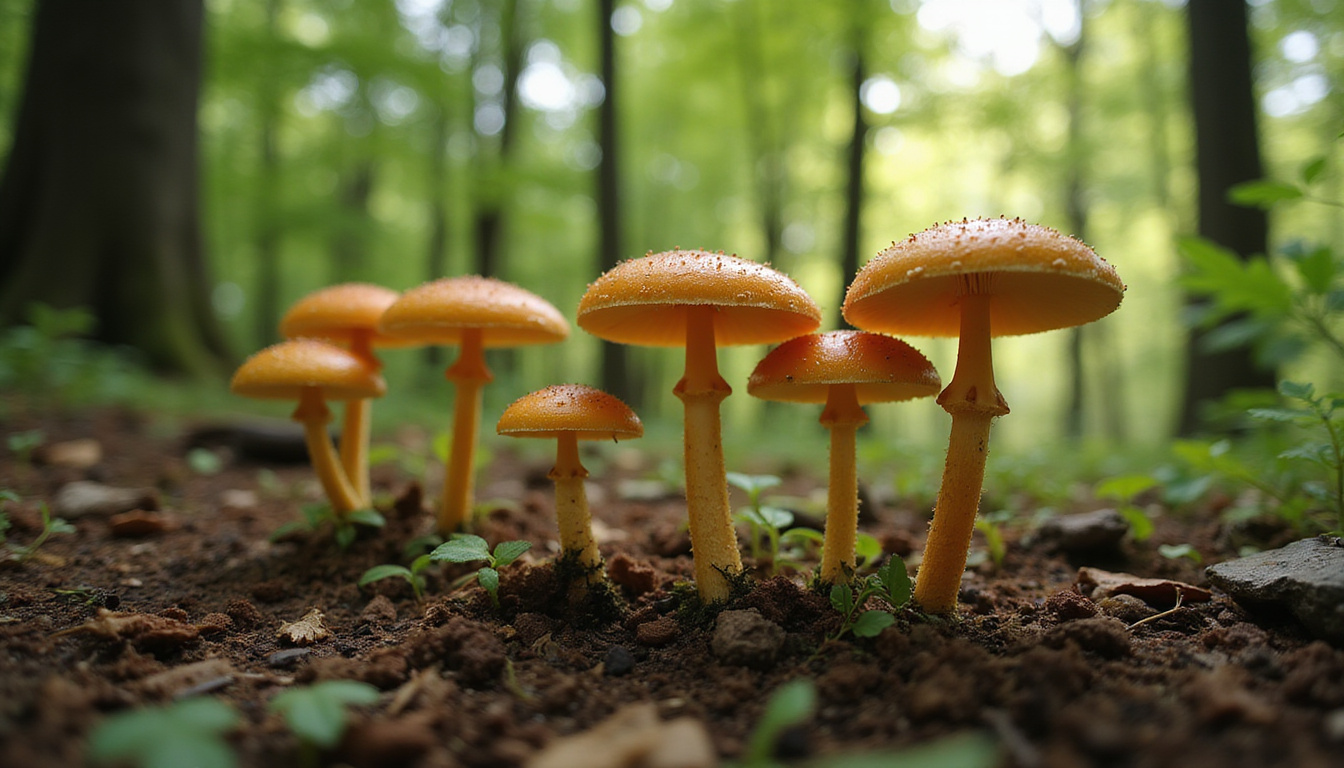Fungi cultivation grows in popularity. People look for food that is sustainable. They want new tastes and health benefits. Beginners and experts need clear advice. This guide gives simple steps and clear tips. It helps you get many mushrooms and enjoy the process.
────────────────────────────
Understanding Fungi Cultivation: Why It Matters
Fungi cultivation is growing mushrooms in a controlled space. Mushrooms are not plants. They belong to their own life kingdom. You build a good space so the mycelium can grow. Mycelium is the fungus part that spreads and later forms mushrooms.
Growing mushrooms gives you fresh food and full control over flavor. You get produce that is chemical-free. You learn as you work. You might earn some money from gourmet types. In this guide, we show you how to plan your growing space, choose mushrooms, and keep a good setting for steady mushroom growth.
────────────────────────────
Choosing Your Mushrooms: Popular Cultivars for Fungi Cultivation
The first job is to choose the right mushroom. Many home growers pick these types:
• Oyster Mushrooms (Pleurotus ostreatus) grow quickly and make many mushrooms.
• White Button Mushrooms (Agaricus bisporus) are common. They need precise care.
• Shiitake (Lentinula edodes) gives rich taste and grows on logs or sawdust.
• Lion’s Mane (Hericium erinaceus) shows a unique form and brings health perks.
• Maitake (Grifola frondosa) has a soft flavor and can grow outdoors.
Choose a type that fits your space and tools. For example, oyster mushrooms suit beginners because they grow fast and forgive small mistakes.
────────────────────────────
Preparing Your Substrate: The Foundation of Fungi Cultivation
The substrate is the base where mycelium lives. A good substrate gives mushrooms the food they need. It helps the mycelium spread well. Many growers use straw, sawdust, wood logs, coffee grounds, or compost.
Steps for making your substrate:
1. Clean and warm the substrate. Remove pests by soaking or steaming.
2. Mix the clean substrate with mushroom spawn. The spawn is mycelium on a material.
3. Let the mix sit in a bag or container. This lets the mycelium grow.
Keep moisture and temperature right. This stops unwanted bugs and helps the mycelium stay strong.
────────────────────────────
Creating the Perfect Environment for Fungi Cultivation
After the substrate is ready, the room is key. Temperature, moisture, light, and air must work well.
• Temperature: Most mushrooms do best from 20°C to 24°C (68°F-75°F).
• Humidity: High moisture of 85% to 95% helps fruiting.
• Light: A soft, indirect light makes the mushrooms form.
• Airflow: Fresh air stops CO₂ build-up and aids growth.
Watch these factors every day. A well-kept environment helps the mycelium grow and the mushrooms appear.
────────────────────────────
Maintaining and Troubleshooting Your Fungi Cultivation
During growth, take care of your crop. Clean and check your growing area every day.
• Contamination: Keep your space clean. Sterilize tools. Work in a controlled area.
• Drying out: Spray water or use a humidifier so the substrate stays moist.
• Poor yields: Change temperature, humidity, or light if few mushrooms form.
• Pests: Use natural repellents or barriers to keep bugs away.
Check your mushrooms often. Act fast to fix any problems.
────────────────────────────
Harvesting and Post-Harvest Care
Harvesting mushrooms well keeps their taste and health. Follow these tips:
• Look for full caps that start to lift at the edges.
• Use a sharp knife or gently twist each mushroom to pick it.
• After picking, store mushrooms in a paper bag inside the fridge for up to one week. You may also dry or cook them.
Good harvesting keeps flavor high. It also helps the mushrooms last longer.
────────────────────────────
Benefits of Fungi Cultivation: Why Grow Your Own Mushrooms?
Growing mushrooms is fun and fresh. You get food that is clean and organic. Mushroom growing links you to nature. It is a hobby that pays back in taste and sometimes money. Whether for cooking, health benefits, or just fun, fungi cultivation fits many needs.
────────────────────────────
Essential Tips for Successful Mushrooms Growing: A Quick Summary
Remember these simple tips:
1. Pick the right mushroom for your space and goal.
2. Keep your substrate clean and free from bugs.
3. Make sure temperature, humidity, light, and airflow are right.
4. Work in a clear, hygienic area.
5. Watch your mushrooms daily and fix small issues fast.
6. Harvest mushrooms when they are truly ready.
────────────────────────────
Frequently Asked Questions About Fungi Cultivation
1. What is the easiest method for beginners?
Oyster mushrooms on straw or coffee grounds are best. They grow fast and forgive small errors.
2. How long until mushrooms appear?
Many mushrooms, like oyster types, show up 2 to 3 weeks after the process starts.
3. What problems might you face in fungi cultivation?
Problems include contamination, wrong moisture levels, and temperature swings. Keep your work space clean, monitor the conditions, and use high-quality spawn.
────────────────────────────
Conclusion: Take the First Step Toward Successful Fungi Cultivation Today
Start your fungi cultivation journey today. It is a mix of science and art. Follow these simple steps and enjoy fresh, tasty mushrooms. Whether for your meals, health, or as a fun hobby, growing mushrooms brings many rewards.
Begin with small steps. Stay alert and enjoy each stage of growth. Soon, you will taste the rewards of your hard work. Gather your supplies and try fungi cultivation. You may soon find a new passion for growing mushrooms.
────────────────────────────
Sources:
- Mushroom Cultivation: A Guide for Beginners (Food and Agriculture Organization of the United Nations)

Leave a Reply